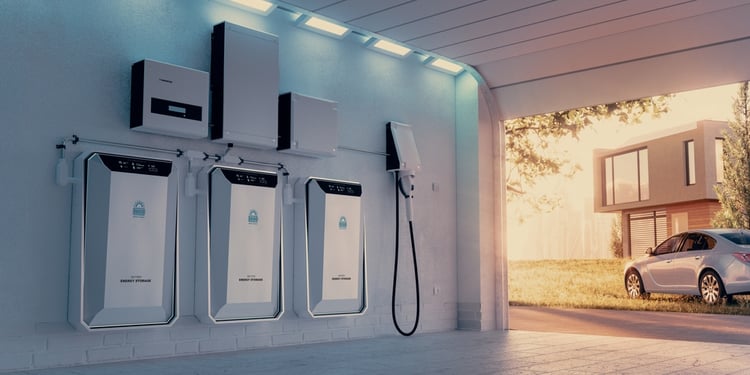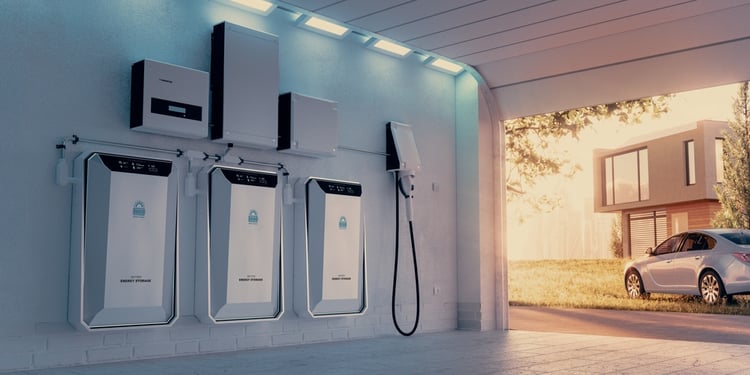You may have noticed that lithium batteries and energy storage systems in general have received a lot of media attention in recent years. Solar panels and wind turbines are being installed at a record rate around the world, and energy storage addresses their main limitation: not being able to provide electricity on demand. While there are many forms of energy storage, lithium-ion batteries have the speed of response needed to keep up with modern grids. They also have a modular design, just like solar panels, meaning they can be configured to suit the scale of any project.
There are two main ways to use grid-tied battery systems: energy arbitrage and grid services Energy arbitrage involves storing large amounts of electricity when supply is high and delivering that energy when demand is high. Electricity prices fall with excess production and rise during peak demand hours; This price difference represents potential profits or savings for battery owners. This is the most obvious application of grid-tied battery systems, but they can perform other useful functions.
Get a professional solar photovoltaic and energy storage project for your building.
Due to their fast response, battery systems can also be used to provide frequency control and other grid services. When electrical grids experience sudden changes in supply or demand, their voltage and frequency tend to become unstable. Battery systems can respond in fractions of a second, absorbing or supplying energy as needed from the grid. A small household battery will not have a noticeable impact on the grid, but large-scale batteries or thousands of small systems operating in coordination have a stabilizing effect.
Using Battery Systems for Energy Arbitrage

Energy arbitrage is a simple concept: electricity is stored when kWh costs are low and used or sold when kWh costs are high. This can be applied with small household batteries, medium-sized storage systems in commercial buildings, or large-scale batteries. In all cases, the basic principle is to save the difference between low and high energy costs.
As a quick example, let's assume a large commercial building is charged 15 cents/kWh during off-peak hours and 35 cents/kWh during peak hours. In this case, it is possible to charge a battery system with electricity during off-peak hours and use that energy when the highest tariff applies. Consumption measured by the concessionaire goes from hours priced at 35 cents/kWh to hours priced at 15 cents/kWh. In other words, you save 20 cents for every kWh stored at a low price and consumed at a high price.
If the commercial facility in this example has a 1,000 kWh battery with 96% round-trip efficiency, energy arbitrage could provide the following daily savings:
- 1,000 kWh is stored every day at 15 cents/kWh, for a total cost of $150.
- 960 kWh is used to avoid 35 cents/kWh consumption, saving $336 per day.
- This 1,000 kWh battery would save you $186 per day, or $67,890 per year.
This concept can also be applied on a larger scale in the wholesale electricity market. Generation companies that own wind turbines or solar farms typically must sell their electricity at spot prices, as they depend on wind and sunlight. With utility-scale energy storage, they can wait hours when wholesale electricity prices are high, making maximum profits.
Energy arbitrage becomes more profitable as the price difference between off-peak and on-peak electricity increases. As this price difference becomes smaller, the potential savings and profits gained from energy storage are smaller.
Using Battery Systems for Grid Services

We tend to focus on the storage capacity of battery systems, but their rated power is also important. There are times when the grid needs a large number of megawatts to be supplied or absorbed as quickly as possible, and batteries are characterized by their fast response. Electrical failures and other grid events can cause a sudden imbalance between generation and consumption, causing voltage and frequency to become unstable. When this happens, electricity grid operators must balance supply and demand as quickly as possible to avoid blackouts .
Potential applications of grid-tied battery systems also include frequency control and ancillary services. In fact, these applications are more profitable in some energy markets, especially those that reward on-demand generation capacity. These batteries operate on short power periods, as opposed to the longer time frames in power arbitrage applications. Of course, it is also feasible to use the same battery system for power arbitration and grid services.
When batteries are used for grid services, their electricity can come from any source, even variable renewable sources. Owners of wind turbines and solar farms can increase their revenue by adding energy storage to their power plants. When batteries are used for grid services, they generate income with their ability to deliver megawatts in an instant, and the change in consumption schedules is less important.

